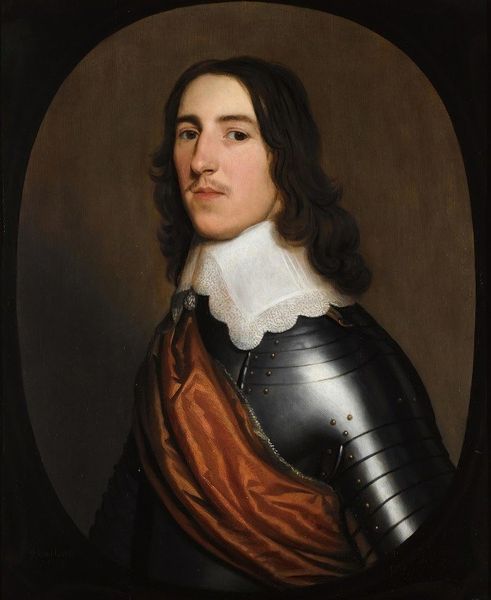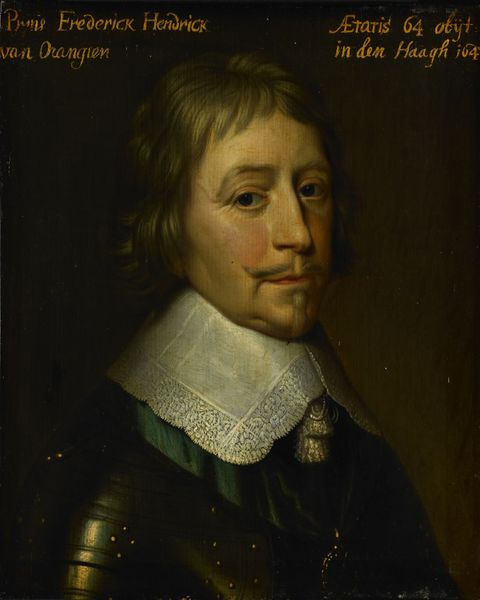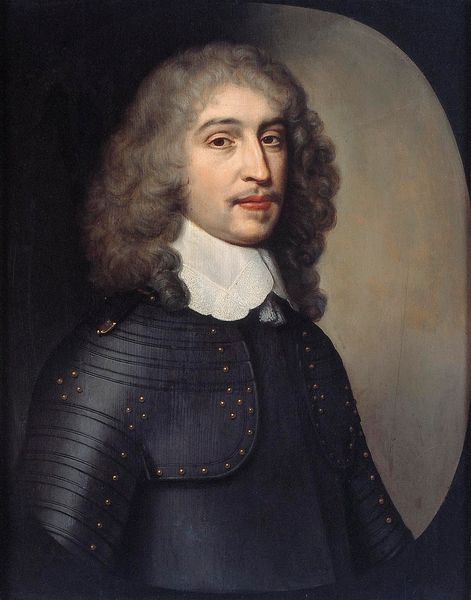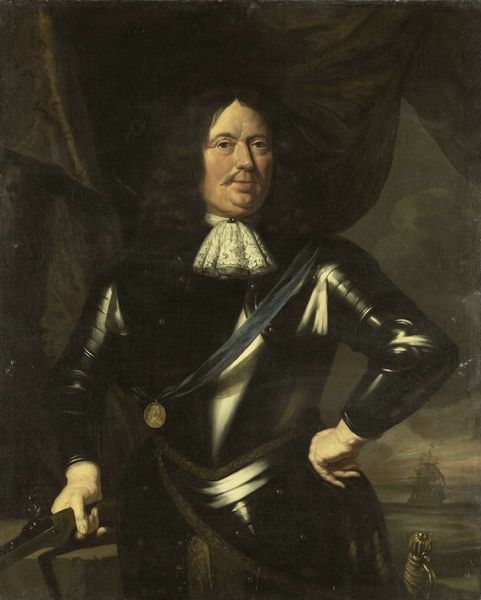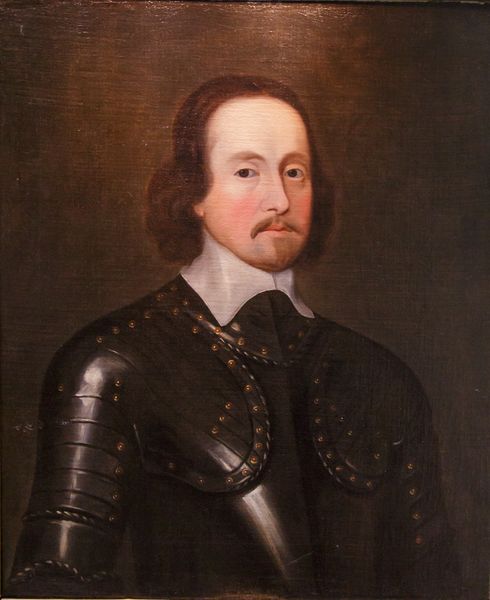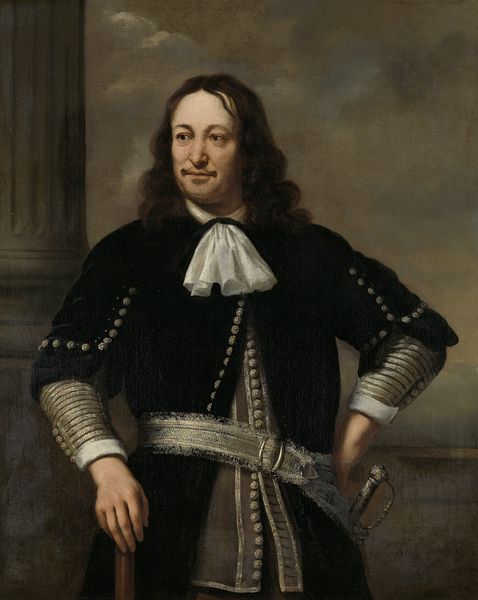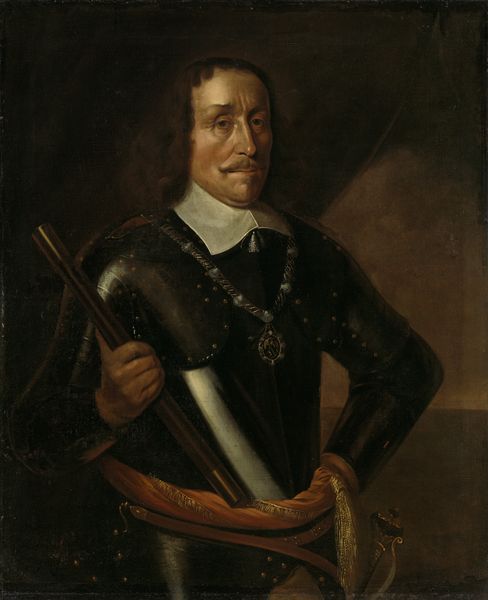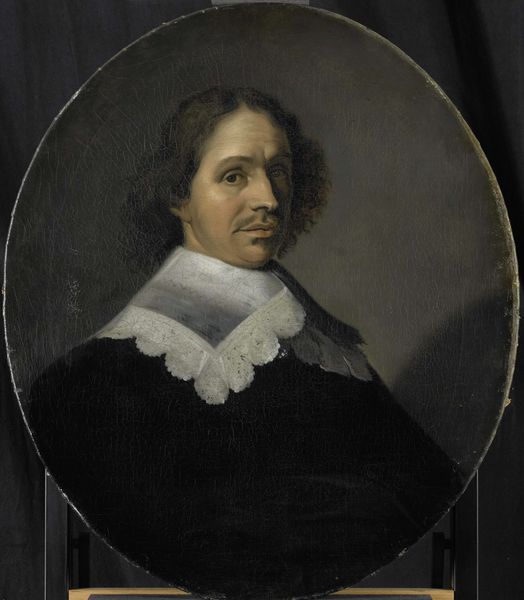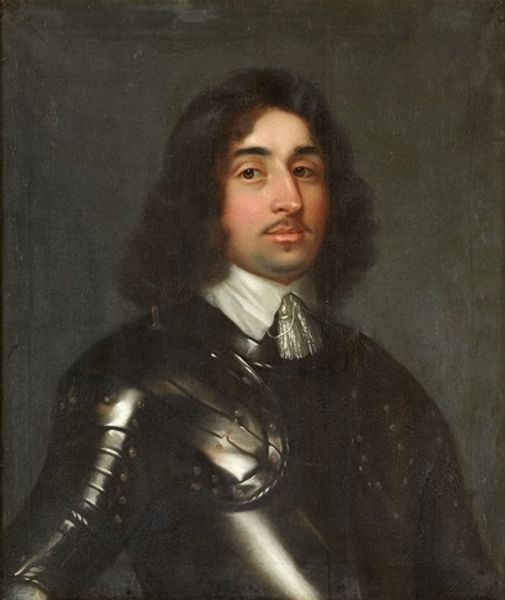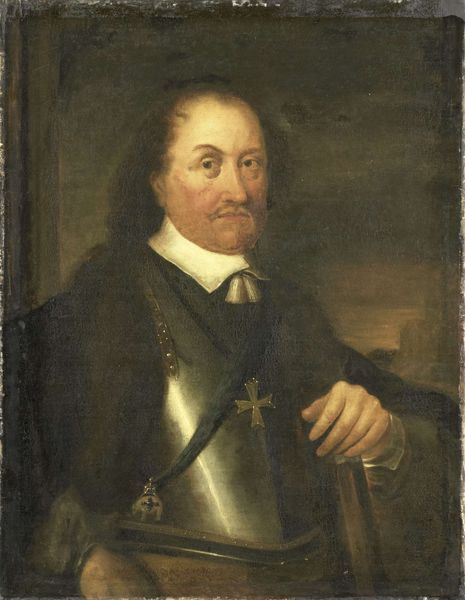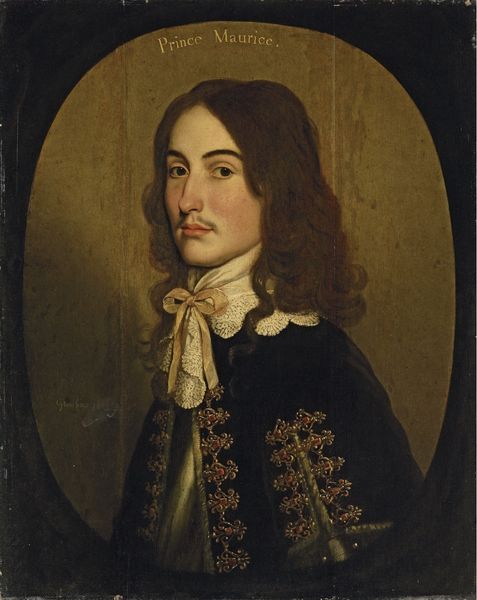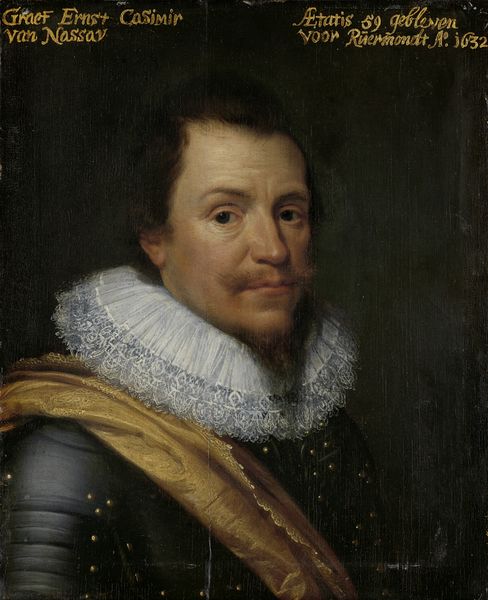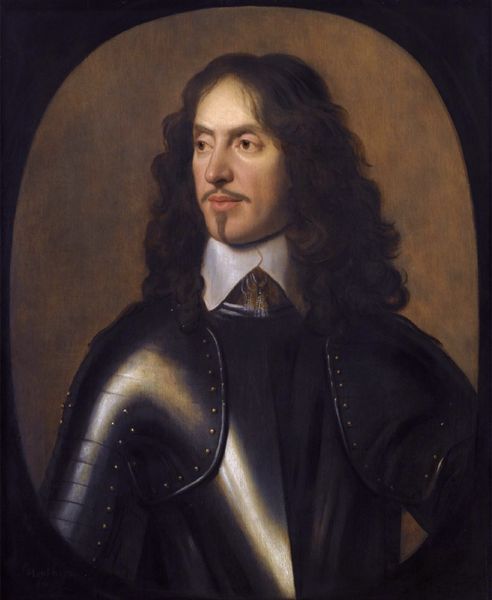
painting, oil-paint
#
portrait
#
figurative
#
character portrait
#
baroque
#
portrait image
#
painting
#
oil-paint
#
portrait reference
#
portrait head and shoulder
#
mid-section and head portrait
#
portrait drawing
#
history-painting
#
facial portrait
#
portrait art
#
fine art portrait
#
celebrity portrait
Copyright: Public Domain: Artvee
Curator: So, we're looking at Gerard van Honthorst's "Portrait of an Officer," painted in 1644, using oil paint. The way the light catches the armor is striking. What do you make of it? Editor: It definitely conveys a sense of authority, but also almost...melancholy? I'm curious how a painting like this functions in its specific material and historical context. How should we be interpreting it? Curator: Well, let's think about the materials and labor involved. This isn't just paint on canvas. Consider the societal value of the officer's armor - where did that come from, how was it manufactured, who bore the economic burden? Think of the skill, labor, and materials to produce a painting like this, reflecting the cultural values assigned to military power and aristocratic portraiture. Editor: So you're suggesting we move beyond simply analyzing the officer’s expression and instead consider the economic and social factors encoded within the portrait itself? Curator: Precisely. Who commissioned this piece? What was the price of the pigments and the canvas, compared to say, an ordinary worker's daily wage? And how did that process, from mine to brush, shape what and who could be represented? Do you think it matters that we only see the officer, rather than, for example, depictions of war or laborers? Editor: That’s really interesting; the choice of depicting *him* becomes a very political one, when we consider who’s left out. And now I’m also thinking about the contrast of lace and armor...both symbols of status, but so different in their making. What kind of class statements could Honthorst be making by pairing such objects in one painting? Curator: Exactly! Now, how do these contrasting materials underscore notions of military status, social standing and, most broadly, of wealth accumulation during the Dutch Golden Age? Editor: That’s given me so much to think about, moving past the aesthetic to the social construction of this painting! Thanks. Curator: My pleasure! And don’t forget to think about the social impact the painting *continues* to have - after all, we’re discussing it now!
Comments
No comments
Be the first to comment and join the conversation on the ultimate creative platform.
